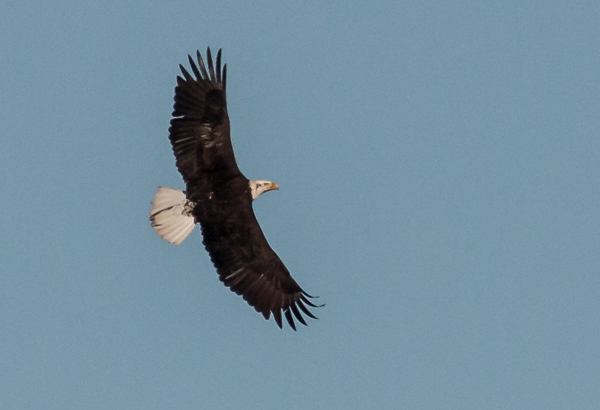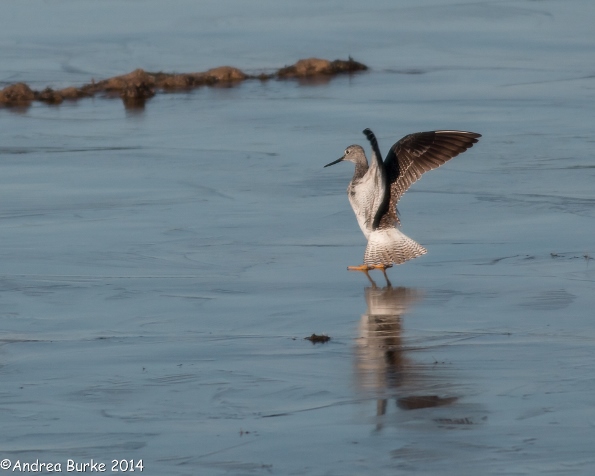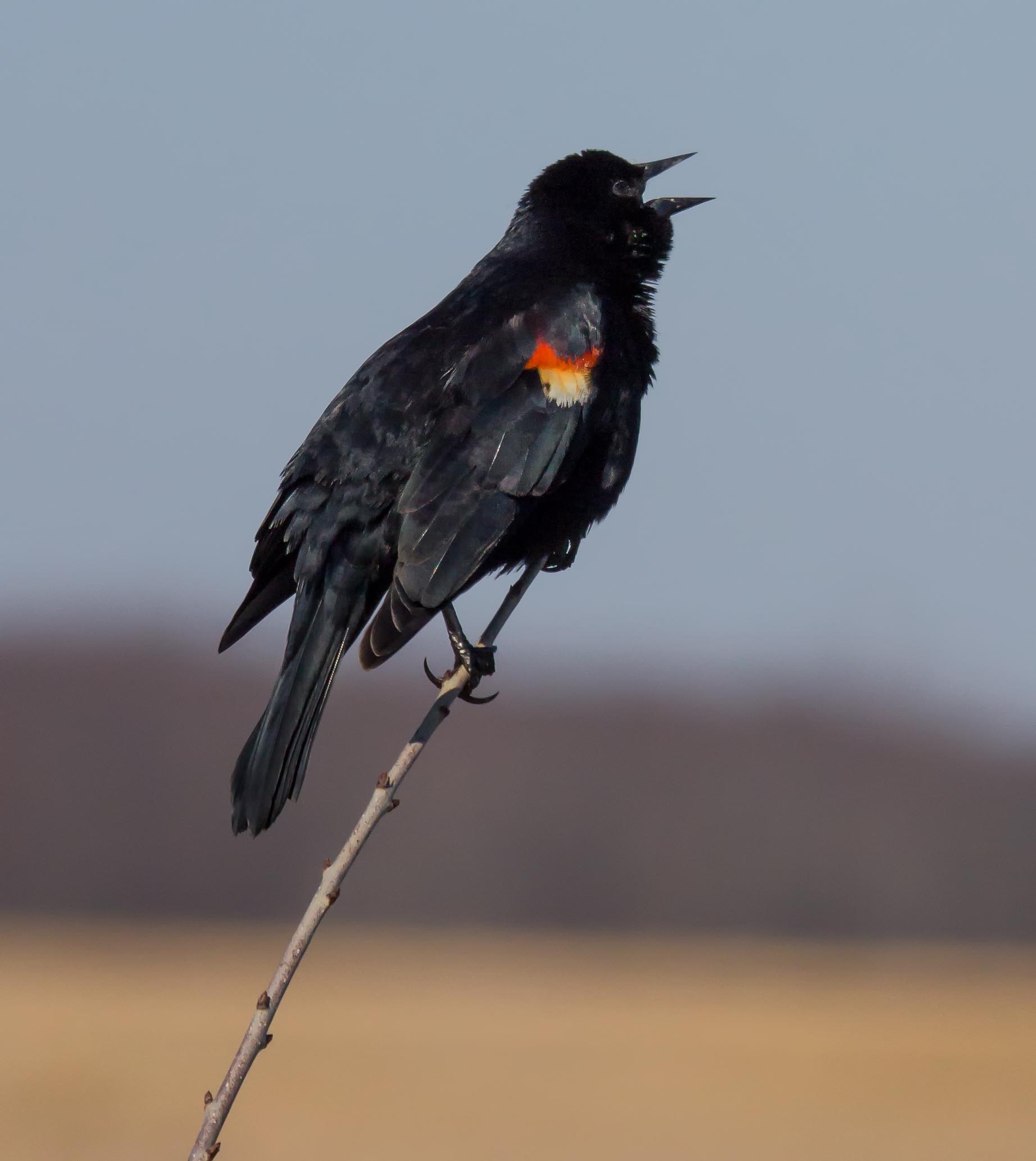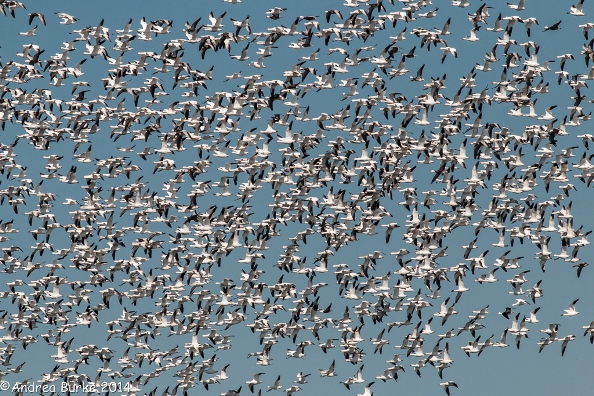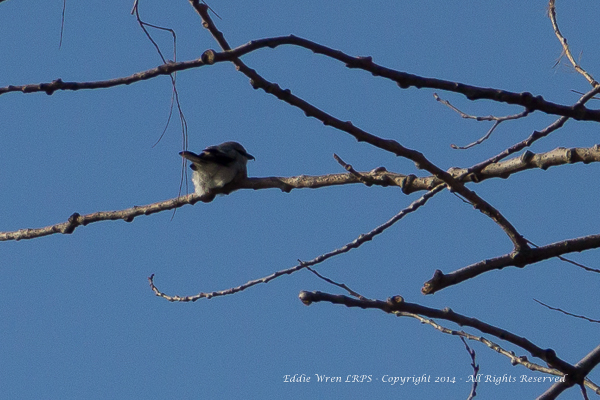As we are still in the height of the spring migration of waterfowl, today was a follow-up from our visit last week to the Montezuma NWR, which is about 100 miles E.S.E. from Iroquois. These two preserves, however, do tend to have a different complexion to each other.

The s.w. corner of Cayuga Pool at Iroquois. Copyright 2014, Eddie Wren. All rights reserved.
I’ve been lucky enough to visit the Iroquois NWR on a fairly regular basis for the past 12 years or so, which has let me see the seasonal variations in a little detail, and so we met this morning at the Cayuga Pool Overlook. The downside of Cayuga is that the birds tend to be quite distant, which drastically reduces the photographic opportunities, but the upside is the wealth of species that can be viewed, using binoculars, spotting scopes or — of course — longer lenses on one’s camera.

Blue-winged Teal. Copyright 2014, Eddie Wren. All rights reserved.
My own species list from today is as follows, but I hope anyone in the group who saw other birds will e-mail me so they can be added here:

Osprey. Copyright 2014, Eddie Wren. All rights reserved.

Briefly kidnapped for a photo! (Leopard Frog). Copyright 2014, Eddie Wren. All rights reserved.
- Canada Goose
- American Wigeon
- Blue-winged Teal
- Northern Shoveler
- Redhead
- Ring-necked Duck
- Bufflehead
- Hooded Merganser
- Ruddy Duck
- Pied-billed Grebe
- Horned Grebe
- Double-crested Cormorant
- Great Blue Heron
- Turkey Vulture
- Osprey
- Bald Eagles (at nest)
- Red-tailed Hawk
- American Kestrel
- American Coot
- Killdeer
- Ring-billed Gull
- Mourning Dove
- American Crow
- Tree Swallow
- Eastern Bluebird
- American Robin
- Song Sparrow
- Red-winged Blackbird
- Common Grackle
- American Goldfinch

Tree Swallows at nest box. Copyright 2014, Kathryn Fenna. All rights reserved.
One of the commonest but many would say most delightful birds to be seen arriving at ponds and lakes each April is the Tree Swallow (Tachycineta bicolor). The “bicolor” part of its scientific name refers to the fact that the refractive sheen on this bird’s back changes from typically being more blue in spring to green in fall.
In spring, however, some birds appear to have only the back of their head showing colour, with their back being a drabber brown. These are first-year females that are just coming up to their ‘first birthday’.

Tree Swallows at nestbox. Copyright 2014, Cherie St. Pierre. All rights reserved.
As at least two of our group photographed tree swallows during this outing, I’ve included some photographs here.
I’ve also added an older photo of my own, taken in May 2011 at the same location (Cayuga Pool), just to make the point that even pocket-sized, point-and-shoot cameras can occasionally be used to get acceptably pleasing bird photos.

Tree Swallow emerging from hole in post. Copyright 2011, Eddie Wren. All rights reserved.
The shot in question (below left), of a tree swallow emerging from a nest hole in an old post, was taken with a Pentax Optio 80 camera, and despite the angle may show one of the first-year females I referred to above.
More photographs from this visit to the Iroquois NWR will be posted on the next page of this write-up [link to follow shortly], but for anyone wanting to visit the refuge on their own, you can be sure it is well worthwhile (otherwise it wouldn’t have that “national” importance in its title!).
The three primary habitats to be found at Iroquois are:
- emergent marsh
- forested wetlands
- grasslands
On this occasion, our own WWNP group visit focussed almost entirely on the areas of open water but we will certainly be going back to look at the other environments, including a ‘warbler walk’ in May. To contact the WWNP group and potentially join us for various outings, please e-mail wwnp [AT] eddiewren [DOT] com — replacing the ‘at’ and the ‘dot’ with the relevant symbols and leaving no spaces. (This is done to cut down on spam e-mails.)
You may view more photos from this visit to Iroquios, by Esther Kowal-Bukata, here.
Useful web pages are here:
Seasons of Wildlife (i.e. what you might see)
The best map of the Iroquois Refuge (pdf)
Eddie


